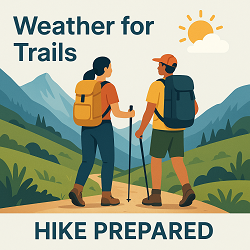Loading alerts...
Nageezi, NM Weather Warnings & Alerts - Real-Time Updates
Real-time weather warnings and alerts for Nageezi, NM. Data from the National Weather Service, updated when page is accessed.
Nearby Areas
Checking nearby areas...
What is the difference between a weather warning, watch and advisory?
The National Weather Service issues alerts in different categories to indicate the severity of storms and if the public should take immediate action to prevent the loss of life or property or be aware of the potential of the same.
Weather Warning
A weather warning is issued when severe weather conditions are occuring or imminent and there is danger to life and/or property. The warning will include what action should be taken including evacuation or shelter in place and should be heeded immediately. Warnings are usually issued for a small, specific area and for a definite period of time.
Weather Watch
A weather watch is an alert issued by the National Weather Service when conditions are favorable for the development of severe weather. A weather watch means that severe weather is possible in the area, so it is important to stay tuned to the latest forecasts and be prepared for potential storms.
The purpose of a weather watch is to provide advance warning to people in the affected area so that they can take necessary precautions. It is important to remember that a weather watch does not mean that severe weather will definitely occur, but simply that there is a higher chance of it happening.
If you live in an area where severe weather is common, it may be wise to have a plan in place for what you will do if a storm hits. Make sure you have plenty of food and water stored, as well as flashlights, batteries, and other supplies. You may also want to consider evacuating if necessary.
Weather Advisory
An advisory means the conditions are likely to occur. These are typically used for less severe weather events like frost or winds but can be used for other types of severe weather.
What is a Red Flag Warning?
A red flag warning is issued by the National Weather Service to inform the public, firefighters, and land management agencies that conditions are ideal for wildland fires and any fire which does start could spread rapidly. These are often issued after drought conditions, when humidity is very low and especially when there are high or erratic winds. The possibility of lightning is also a determining factor. Fire fighting agencies often will increase their staffing and equipment resources due to the forecast risk. For the public, a Red Flag Warning often means high fire danger leading to restrictions or bans on outdoor burning including burn piles, burn barrels and campfires. Use of anything which may produce sparks, including outdoor lawn equipment, chainsaws and welding, may be restricted or prohibited.
The weather criteria for fire weather watches and red flag warnings vary with each Weather Service office’s warning area based on the local vegetation type, topography, and distance from major water sources. They usually include the daily vegetation moisture content calculations, expected afternoon high temperature, afternoon minimum relative humidity and daytime wind speed.
An enhanced version of the warning, called extreme red flag warning, may be issued. This means that conditions for fire growth and behavior are extremely dangerous due to a combination of strong winds, very low humidity, long duration, and very dry fuels.

